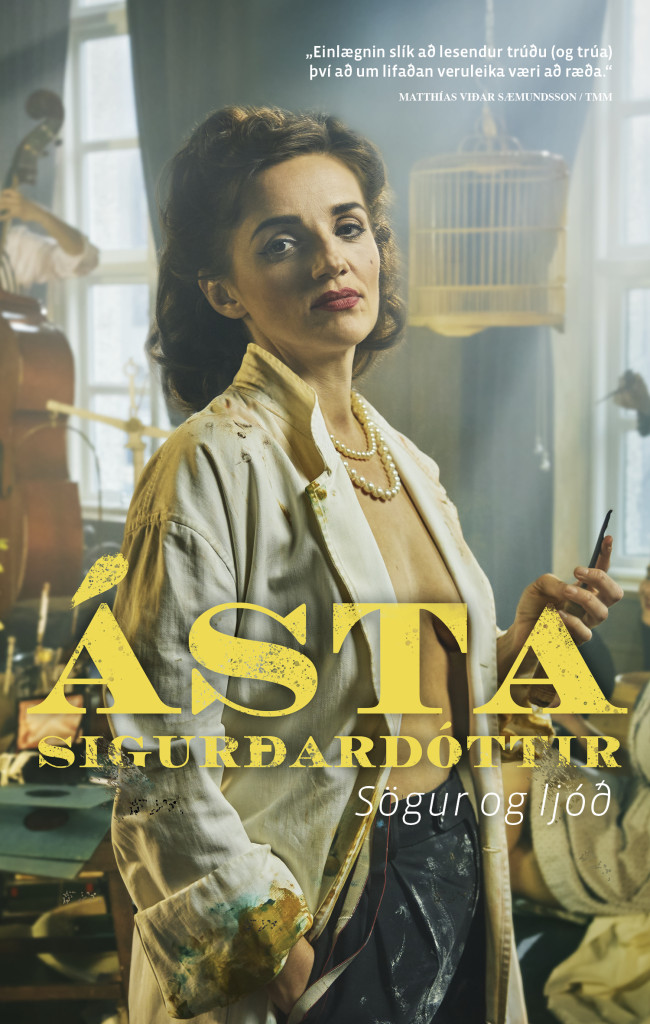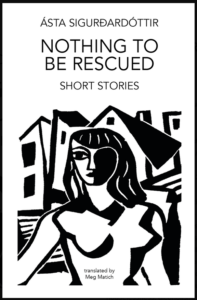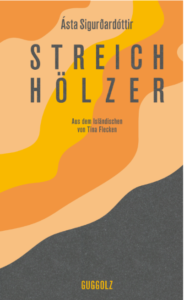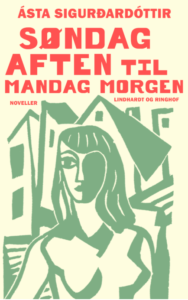The Icelandic Tove Ditlevsen and Lucia Berlin
Still today, Sigurdardottir’s short stories remain fresh, challenging and laden with strong emotions.
They are modern Icelandic classics.
As a young woman Asta Sigurdardottir (1930-1971) displayed great talent in the fields of creative writing and visual arts. She attracted considerable attention when her short story Sunnudagskvöld til mánudagsmorguns (Sunday Night to Monday Morning) was published in the magazine Líf og list (Life and Art). In the years that followed, one story after another became focus points for attention; the collection that was published in 1961 became an instant classic.
Sigurdardottir’s poetic and hallucinogenically-beautiful stories, often written from the perspective of a naïve girl or young woman, grapple with violence in mid-twentieth century Iceland from the vantage points of marginalized voices. Her’s stories are considered unique, exhibiting the writer’s singular vision of people and the environment.
“Asta Sigurdardottir’s short stories didn’t only arrive as a meteor into Icelandic post-war literature of the 50s and 60s, the impact can still be seen in the works of writers three generations later. We have all walked through the dark dorrs she opened with her one and only published collection. Scandalous in their time, Asta Sigurdardottir’s stories … with their author’s unflinching look at the fledgling city of Reykjavik, and her compassionate but cool observation of the fate of the marginalised within it – have become recognised as a major contribution to the Icelandic literary canon and as a Nordic classic.”
SJÓN, WRITER
“A luminous literary talent… Asta Sigurdardottir wrote with sovereign assurance, with extreme directness, powerful imagery, and violent intensity. A classic of modern Icelandic literature… it is no exaggeration to say that a well-kept secret is finally revealed.”
ERIK SKYUM-NIELSEN, INFORMATION
“[Sigurdardottir’s] prose is sharp, vivid, profoundly original, mixing sly irony with a darkness that presses down like a weight.”
BENEDICTE GUI DE THURAH HUANG, POLITIKEN
“These female characters are absolutely modern […] Even those who read a lot will be repeatedly surprised and gifted by Sigurðardóttir’s language through her imagery and expressions. She is able to make her peripheral characters perceive the world poetically. […] Thus, the thirteen texts form a panorama of post-war Iceland that, with its breadth and linguistic beauty, shows: While the island state may be far away, this voice fits seamlessly into the chorus of European literary voices.”
CHRISTIANE PÖHLMANN, FAZ
“Her reputation was daring from the very beginning […] She died at only 41 years old. But her small literary oeuvre, which consists of little more than a dozen short stories, is now considered groundbreaking. […] And the surprising thing is: they still feel fresh; their desperately wavering characters come across as very close, despite the time distance. […]”
ULRICH RUDENAUER, TAGESSPIEGEL
“Grandios”
DIE ZEIT
“The abyss in the world of Asta Sigurdardottir seem really bottomless […] their distorted narratives are characterized by a total loss of control.”
JUDITH LEISTER, NZZ
“Asta Sigurdardottir is a ruthless narrator […] for the first time in German – a true discovery!”
RAINER MORITZ, DEUTSCHLANDFUNK KULTUR
“The Icelandic author and artist Ásta Sigurðardóttir (1930–1971) is a real discovery! [… ] she mercilessly uncovers social contradictions, denouncing all forms of violence, especially against women, whether psychological or physical. She stands with the weak, the beaten, the victim.”
ENNO STAHL, JUNGE WELT
“Sigurðardóttir was one of the first writers to capture, from within a vernacular perspective, a truly urban discourse, growing out of the “raw” experience of the postwar era and a disillusioned view of its expanding bourgeois world. The energy of her stories emanates from a subcultural sphere of poverty and bohemianism, violated childhood, and wounded femininity.”
ASTRADUR EYSTEINSSON, A HISTORY OF ICELANDIC LITERATURE
(published by The University of Nebraska Press, Lincoln & London in 2006)
“Asta’s short stories are so sharp that they might as well have been written today – or tomorrow! The raw nerve that quivers in them cuts through time like a crystal-clear scream. They narrate the essence of being human, an outcast, embodying the roles of a woman and an artist, while encapsulating a soul brimming with desire, resilience, and solitude. Simultaneously, they offer a depiction of society and the enduring toxic structures we witness today. We understand well that Asta is a beacon on the volcanic island, and we eagerly anticipate bringing her luminous insight to Danish readers!”
SUNE DE SOUZA SCHMIDT-MADSEN, EDITORIAL DIRECTOR LINDHARDT&RINGHOF, DENMARK
“She caused a sensation from her early short story debut in the avant-garde magazine Líf og list in 1951 with Sunnudagskvöld til mánudagsmorguns, a description of drunkards, the homeless, and the promiscuous on the fringes of society. The narrative is pithy and metaphorical with elements of fantasy, the language sensuous, erotic, and partly grotesque.”
NORDICWOMENSLITERATURE.NET
“I think that her work marked a turning point in women’s literature in Iceland.”
MEG MATICH, ASYMPTOTEJOURNAL.COM
“Ásta Sigurðardóttir’s short stories embody both existential anguish and a rebellious dignity – a combination that keeps them as vital and as truthful today as when they were first written. Her prose is precise and provocative, giving voice to the contradictions of human nature without ever resolving them. These stories endure as works of lasting significance, not only for their distinctive linguistic brilliance but also for her fierce determination to comprehend a world at once intricate and diverse – a world illuminated, at times, by sudden and startling flashes of pure joy, just like life itself.”
MARIUS HJELDNES, FICTION EDITOR, BONNIER NORSK FORLAG, NORWAY







